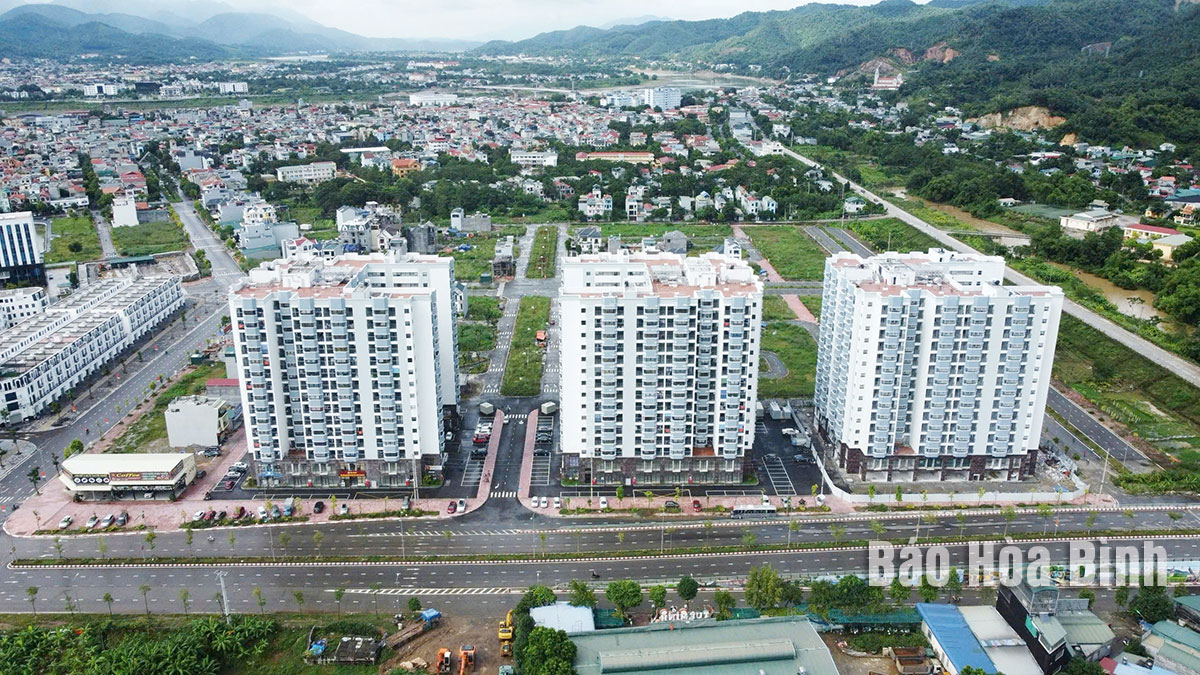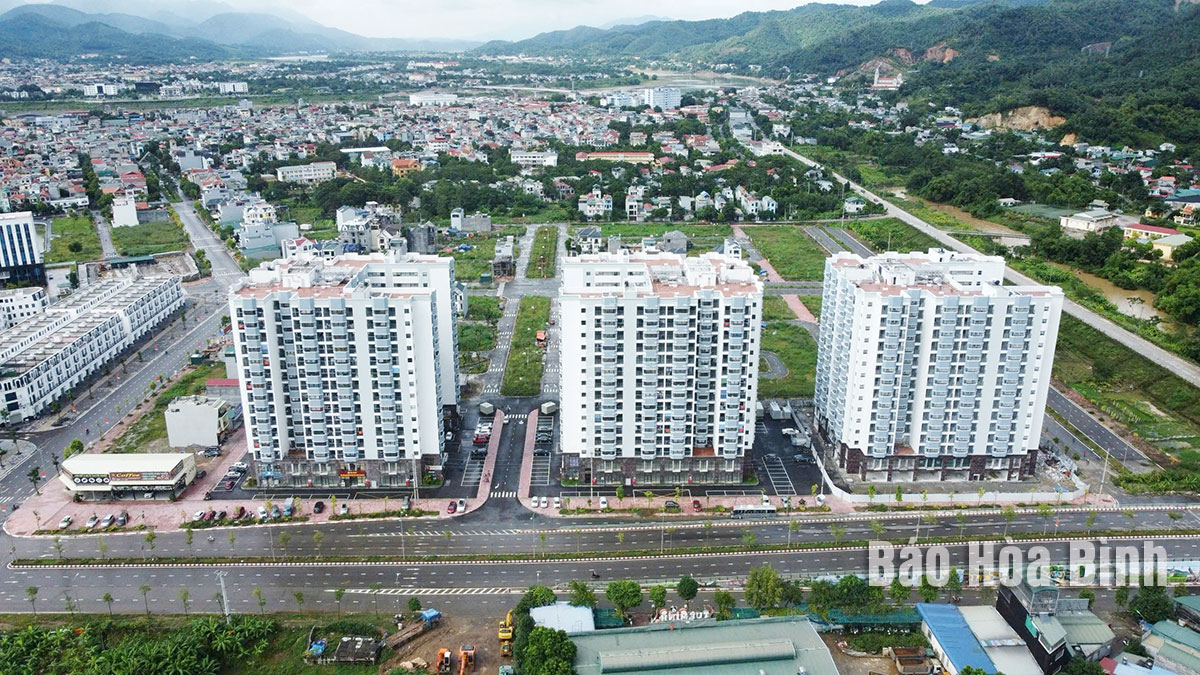
Hoa Binh city is gathering feedback from ministries and sectors regarding its proposal for tier-2 urban status. After years of development from its tier-3 foundation, the city is awaiting inclusion in the country’s list of more than 30 tier-2 urban centres.
A corner of Hoa Binh city.
For Le Minh Long, a native in Tan Thinh ward who now lives in Hai Phong city,
the transformation of his homeland is striking with high-rise building,
shopping zones, an array of services, and bustling streets.
Prior to 2010, entertainment options for young people were limited to a handful
of small coffee and fashion shops and eateries. Nowadays, shopping centres
offer everything from retail therapy to cinema experience, helping younger
generations embrace a contemporary and dynamic lifestyle.
Over the recent past,
multiple infrastructure improvement projects have been carried out, including
the upgrade of key streets like Cu Chinh Lan, An Duong Vuong, Ba Trieu, Vo Thi
Sau, Ly Nam De, and Phan Boi Chau. These projects cover sidewalk renovation,
lighting system supplement, and drainage system construction.
Besides, the city has accelerated the site clearance work for the construction
of key projects, helping create a facelift to the locality.
The economic indicators also support the city’s ambition. Over the past three
years, Hoa Binh city has maintained an average economic growth rate of 11.93%
while per capita income is 1.51 times higher than the national level. Besides,
non-agricultural employment has reached 82.2% while the poverty rate has
dropped significantly to 1.38%. According to the Ministry of Construction’s
assessment board, the metrics align with the tier-2 urban standards.
Achieving the tier-2
status, Chairman of the city People’s Committee Pham Anh Quy said, will not
only be a milestone but also a starting point for the city to continue
consolidating and improving its achieved criteria, with the ultimate goal of
improving the living quality of the local residents.
The city, boasting rich cultural, historical and ethnic traits of the
northwestern region, will keep on making breakthroughs and positioning itself
as a political, administrative, economic, cultural, social and
scientific-technical centre of Hoa Binh province.
The Standing Board of the Hoa Binh provincial Party Committee has agreed in principle on a proposal by the Standing Board of the Party Committee of Hoa Binh city to gather feedback on the city’s 1:2000 zoning plan, which forms part of its broader urban development strategy.
Hoa Binh province has made notable progress in public administration reform and digital government development, with the satisfaction index among citizens and businesses reaching over 84%, according to recent government evaluations.
Thanks to great efforts by local authorities in recent times, the governance and public administration performance of Mai Chau district has been significantly improved.
In the afternoon of June 6, the Party Committee, the People's Council, the People's Committee and the Fatherland Front of Lac Son district solemnly held a meeting to celebrate the 139th anniversary of the district's founding (1886–2025) and the 79th anniversary of the establishment of the district's Party Committee (1946–2025). There was the attendance of Mr. Bui Van Thang, the Vice Chairman of the Provincial People's Council; Mr. Quach Tat Liem, the Vice Chairman of the Provincial People's Committee; Ms. Dang Bich Ngoc, the Deputy Head of the National Assembly Delegation of the province; as well as the former leaders of the province and district through various periods, who are the natives of the district.
Implementing the Politburo’s Resolution No. 57-NQ/TW on breakthroughs in science – technology, innovation, and digital transformation is a golden opportunity for the northern mountainous province of Hoa Binh to renew growth model, improve competitive edge and shorten digital gap.
Resolution 57-NQ/TW, issued by the Politburo on December 22, 2024, identifies sci-tech, innovation, and digital transformation as strategic breakthroughs to build a developed and prosperous nation. In Hoa Binh province, this spirit is not just a slogan, it’s being put into action through concrete initiatives that form a "new development triangle”: digital citizenship, digital economy, and digital administration.



